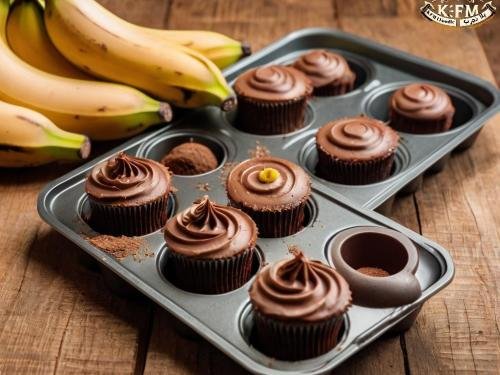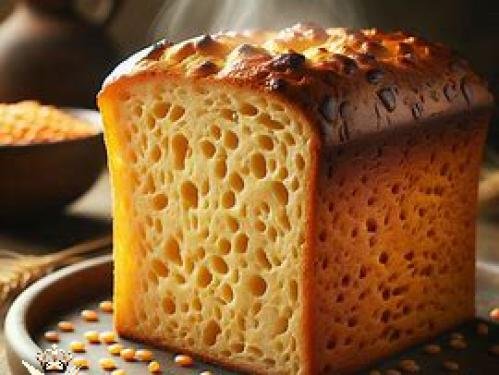The combination of Vaseline and vinegar is the ideal product for moisturizing the skin and body. Vaseline acts as a gel-like cream that forms a barrier to lock in moisture deeply and quickly. It contains vitamins A and E, which enhance skin health, while vinegar provides organic acids that improve skin appearance and reduce pigmentation. This makes the product highly effective in hydrating dry skin and restoring its natural ability to absorb moisturizers such as lotions and creams.
Thanks to its concentrated and rich formula, this product helps in skincare by exfoliating dead skin cells and cleansing it with the acidic properties of vinegar, effectively evening out skin tone and improving texture. Vaseline, also known as petroleum jelly, is a natural product that works within minutes to protect the skin from dryness and pollution. It is quickly absorbed, leaving the skin soft and well-protected.
Additionally, this formula is enriched with natural extracts such as aloe vera, cocoa butter, or even panthenol, making it ideal for daily care of the body and hands. It provides long-lasting protection and high effectiveness without the need for additional external products. This innovative formula is the ultimate solution for maintaining clear and hydrated skin, as it helps repair damage and deeply restore moisture, giving the skin a smooth, even appearance.
However, excessive use of vinegar may cause skin dryness or irritation. Therefore, it is best used in moderate concentrations along with a strong moisturizer like Vaseline to maintain skin balance.
Recipe 1: Vaseline and Vinegar for Cracked Heels
Ingredients:
1 tablespoon of Vaseline
½ cup of white vinegar or apple cider vinegar
1 cup of warm water
Preparation Method:
1. Prepare the Foot Soak:
Mix ½ cup of white vinegar or apple cider vinegar with 1 cup of warm water in a suitable container for soaking your feet.
Ensure the water is warm but not too hot to avoid skin irritation.
2. Soak Your Feet:
Soak your feet in the solution for 15-20 minutes. The vinegar helps soften dead skin and cleanse the skin.
Add more warm water if necessary to maintain the ideal temperature.
3. Dry Your Feet:
After soaking, dry your feet thoroughly with a soft, clean towel.
Make sure to dry between the toes to prevent moisture buildup that could lead to fungal infections.
4. Apply Vaseline:
Apply a thick layer of Vaseline to the cracked and dry areas of your feet.
Vaseline acts as a barrier that locks in moisture and deeply hydrates the skin.
5. Wear Socks:
Put on clean cotton socks after applying Vaseline. Socks help retain moisture and prevent Vaseline from transferring to surfaces.
It is best to do this step before bedtime to allow the skin to fully absorb the moisture overnight.
6. Repeat the Process:
Repeat this process daily for the best results. With continued use, you will notice a significant improvement in the softness and hydration of your feet.
Additional Tips:
For better results, gently scrub your heels with a pumice stone or loofah before applying Vaseline to remove dead skin.
Make sure to drink enough water daily to keep your skin hydrated from within.
Avoid walking barefoot on hard surfaces to prevent cracks from worsening.
By following these steps regularly, you can treat cracked heels and achieve soft, healthy skin.
Recipe 2: Vaseline and Vinegar for Skin Brightening and Pigmentation Removal
Ingredients:
1 teaspoon of medical Vaseline: Acts as a deep moisturizer, helping to soften the skin and protect it from dryness.
1 teaspoon of apple cider vinegar: Contains natural acids that help exfoliate the skin and lighten pigmentation.
½ teaspoon of fresh lemon juice: Rich in vitamin C and citric acid, which aid in brightening the skin and reducing dark spots.
Preparation and Usage:
1. Prepare a Clean Bowl:
Use a small, clean bowl for mixing the ingredients. Ensure it is completely dry before use.
2. Mix the Ingredients:
Add 1 teaspoon of Vaseline to the bowl. If the Vaseline is too solid, soften it by microwaving it for a few seconds or warming it in a hot water bath.
Add 1 teaspoon of apple cider vinegar to the Vaseline.
Add ½ teaspoon of fresh lemon juice to the mixture.
Stir well using a spoon or small mixing tool until you get a smooth and homogeneous blend with no lumps.
3. Prepare Your Skin:
Cleanse the Skin: Wash your face or the targeted area with a suitable cleanser to remove dirt and oils.
Dry the Skin: Gently pat your skin dry with a soft, clean towel instead of rubbing to avoid irritation.
4. Apply the Mixture:
Using clean fingers or a makeup brush, apply an even layer of the mixture to pigmented or dark areas. Avoid the eye and lip areas.
Massage the Skin: Gently massage in circular motions for 1-2 minutes to enhance absorption.
Let It Sit: Leave the mixture on your skin for 15 minutes to allow the ingredients to work on brightening and exfoliating dead skin cells.
5. Remove the Mixture:
Wash the skin with lukewarm water to completely remove the mixture. Ensure no residue is left behind.
Dry the Skin: Gently pat your skin dry with a soft, clean towel.
Moisturize: After drying, apply a suitable moisturizer to keep your skin hydrated and prevent dryness.
6. Frequency of Use:
For the best results, repeat this treatment 2-3 times per week.
Important Notes:
Allergy Test: Before applying the mixture to your face or large areas of skin, perform a simple allergy test by applying a small amount to a small area of skin (such as the inner wrist) and wait for 24 hours. If no signs of irritation or allergy appear, you can safely use the mixture.
Avoid Sun Exposure: After using this treatment, your skin may become more sensitive to sunlight. It is recommended to avoid direct sun exposure and apply a high-SPF sunscreen when going outside.
Storage of the Mixture: It is best to prepare just enough for immediate use. If you have leftover mixture, store it in an airtight container in the refrigerator for no more than one week.
Consult a Dermatologist: If you have sensitive skin or suffer from specific skin conditions, it is advisable to consult a dermatologist before using this treatment.
By following these detailed steps, you can safely and effectively prepare and use the Vaseline and vinegar recipe for skin brightening and pigmentation removal.
Recipe 3: Vaseline and Vinegar for Treating Keratosis Pilaris ("Goosebumps Skin")
Ingredients:
1 tablespoon of medical Vaseline
1 tablespoon of white vinegar or apple cider vinegar
1 teaspoon of brown sugar or fine salt
Preparation and Usage:
1. Preparing the Mixture:
In a clean bowl, add 1 tablespoon of medical Vaseline.
Add 1 tablespoon of white vinegar or apple cider vinegar to the Vaseline.
Add 1 teaspoon of brown sugar or fine salt to the mixture.
Mix the ingredients well using a spoon or stirring tool until you achieve a creamy, smooth consistency.
2. Applying the Mixture to the Skin:
Before application, wash the affected area with warm water and mild soap to remove dirt and oils.
Gently pat the skin dry using a soft towel.
Apply an appropriate amount of the mixture to the affected area.
3. Massage and Exfoliation:
Start massaging the area in gentle circular motions using your fingertips.
Continue massaging for 5 minutes to help exfoliate dead skin and stimulate blood circulation.
4. Letting the Mixture Sit:
After massaging, leave the mixture on the skin for an additional 10 minutes to allow the ingredients to penetrate the skin, providing necessary hydration and exfoliation.
5. Removing the Mixture:
Rinse the area with warm water to completely remove the mixture. Ensure no residue is left behind.
Gently pat the skin dry using a clean towel.
6. Post-Treatment Moisturizing:
After drying, apply a suitable moisturizer to the treated area to maintain skin softness and prevent dryness. You can use a moisturizer containing lanolin or glycerin for enhanced hydration.
7. Frequency of Use:
For the best results, repeat this treatment twice a week. Consistent use will help reduce the appearance of keratosis pilaris and improve skin texture over time.
Important Notes:
Allergy Test: Before applying the mixture to a large area, test a small amount on a small patch of skin to ensure there is no allergic reaction to any of the ingredients.
Avoid Irritation: If you experience any irritation or severe redness, wash the area immediately and discontinue use.
Consistent Moisturization: In addition to using this treatment, keep your skin moisturized daily with suitable moisturizers, especially after showering, to maintain smoothness and prevent dryness.
By following these steps regularly, you can improve the appearance of keratosis pilaris ("goosebumps skin") and achieve softer, more flexible skin.
Ingredient Substitutes
Vaseline Alternatives: You can replace Vaseline with natural ingredients such as:
Beeswax: Acts as a natural barrier and provides effective hydration.
Coconut oil or olive oil: Offer moisturizing and nourishing properties for the skin.
Vinegar Alternatives: If white vinegar or apple cider vinegar is unavailable, you can use:
Diluted lemon juice: Provides similar exfoliating properties but requires caution due to potential sensitivity. Avoid direct sun exposure after use.
Easy Homemade Vaseline Substitute
You can easily prepare a natural Vaseline alternative at home using simple and readily available ingredients. Here are two methods to make homemade Vaseline:
Method 1: Using Beeswax and Olive Oil
Ingredients:
100 grams of beeswax
1 cup of extra virgin olive oil
2 capsules of Vitamin E (optional)
Preparation:
Grate the beeswax and place it in a metal container over low heat.
Gradually add the olive oil while stirring continuously until the beeswax melts completely and blends smoothly.
If desired, add the contents of the Vitamin E capsules and mix well.
Pour the mixture into a clean container and let it cool before use.
Method 2: Using Beeswax and Olive Oil
Ingredients:
1 ounce (approximately 28 grams) of beeswax
½ cup of olive oil
Preparation:
Combine the ingredients in a saucepan and heat over very low heat until the beeswax is completely melted.
Once warm, pour the mixture into a jar or another container.
Use it just like regular Vaseline.
Notes:
You can add a few drops of your favorite essential oil to give the homemade Vaseline a pleasant fragrance.
Store the homemade Vaseline in an airtight container in a cool, dry place to maintain its quality.
Benefits and Risks
Benefits:
Skin Hydration:
Provides long-lasting moisture by creating a protective barrier on the skin.Skin Exfoliation:
Vinegar helps remove dead skin cells and improves skin appearance.Improved Blood Circulation:
Massaging the mixture during application enhances blood flow and promotes cell renewal.
Risks and Side Effects:
Vinegar:
Excessive use may cause dryness or irritation, especially for those with sensitive skin.
It is best to dilute it or mix it with moisturizing ingredients to reduce the risk of irritation.
Vaseline:
Overuse may clog pores in some individuals, potentially leading to acne.
It should be used in moderate amounts to maintain skin balance.
Warnings and Tips
Avoid Use on Open Wounds:
Do not apply these remedies to open wounds or burns to prevent infection or increased irritation.
Allergy Test:
Perform a simple allergy test before applying the remedy to large areas. Apply a small amount to a discreet area and wait 24 hours to ensure no adverse reactions occur.
Avoid Sun Exposure:
After using remedies containing lemon juice, avoid direct sun exposure and apply sunscreen with a high SPF.
Continuous Moisturization:
It is recommended to use an additional moisturizer after treatment to maintain skin softness and prevent dryness.
Scientific Information
Mechanism of Action of Ingredients:
Vinegar:
Vinegar acts as a mild exfoliant due to its acidic properties, helping to remove dead skin cells, stimulate cell renewal, and improve skin texture. It also restores the skin’s pH balance, maintaining its protective barrier against bacteria and external factors.
Several studies suggest that the organic acids in vinegar enhance skin appearance and reduce inflammation, supporting its use in natural remedies.Vaseline:
Vaseline creates an occlusive barrier that prevents moisture loss by forming a protective layer on the skin. This helps deeply hydrate and protect the skin from dryness and cracking. Additionally, some types of Vaseline contain vitamins A and E, which contribute to skin health and combat free radicals.
FAQs and Answers
Can these remedies be used for all skin types?
It is advisable to conduct a patch test before applying the remedies widely. While they are generally suitable for most skin types, individuals with sensitive skin should be cautious and consult a dermatologist if they have known allergies to any ingredients.
How long does it take to see results?
Results vary depending on the skin condition and type of concern. Generally, minor improvements can be noticed within one to two weeks with regular use, while significant results may take four to six weeks.
Can vinegar be used directly on the skin without mixing it with Vaseline?
No, applying undiluted vinegar directly on the skin is not recommended, as it may cause irritation or dryness. It should be diluted or mixed with moisturizing ingredients like Vaseline to minimize the risk of irritation.
What precautions should be taken when using these remedies?
Conduct an allergy test before applying to large areas.
Avoid using remedies on open wounds or burns.
Apply an additional moisturizer after treatment to maintain hydration.
Avoid direct sun exposure after using remedies containing lemon juice.
Can Vaseline alternatives be made at home using other ingredients?
Yes, natural alternatives to Vaseline can be made using beeswax, coconut oil, or olive oil. The process involves melting the ingredients together and allowing them to cool to achieve a Vaseline-like consistency.
How should homemade remedies be stored?
Store homemade remedies in airtight containers in a cool, dry place away from direct sunlight. It is best to use them within one to two weeks to ensure freshness and safety.
What is red Vaseline, and what are its benefits?
Red Vaseline is a specialized type of Vaseline that contains natural cosmetic additives, acting as a unique lotion for moisturizing and protecting the skin. It aids in wound healing, reduces irritation, and enhances skin softness due to its rich composition of vitamins and nourishing compounds.
Can the Vaseline and vinegar mixture be used for lice treatment?
Yes, a Vaseline and vinegar mixture can be an effective natural treatment for lice. Vinegar helps break down the lice’s protective layer, making it easier to remove, while Vaseline forms a barrier that prevents reinfestation. It is recommended to test a small area first to avoid scalp irritation.
Can the Vaseline and vinegar mixture be used on the face?
Yes, this mixture can be used on the face, especially for oily and acne-prone skin. Vinegar helps exfoliate and cleanse impurities, while Vaseline moisturizes and protects against dryness. However, vinegar should always be diluted before application, and the mixture should be applied gently to prevent irritation, especially for those with sensitive skin.
What is the Vaseline and Nivea mixture, and what are its uses?
The Vaseline and Nivea mixture is a unique combination that enhances skin care by merging Vaseline’s moisturizing properties with Nivea’s nourishing ingredients. This blend provides daily skincare benefits, helping to restore softness and protect against dryness. It is suitable for both facial and body care, making it ideal for normal and sensitive skin types.
Nutritional Values and Benefits of the Ingredients in the Three Recipes
1. Petroleum Jelly (Vaseline)
Calories: 0
Fat: 100% petroleum-based fat
Benefits:
Acts as a protective barrier, preventing moisture loss from the skin.
Promotes wound and crack healing.
Protects the skin from irritation and flaking.
2. Vinegar (Apple Cider Vinegar or White Vinegar)
Calories: 3 per tablespoon
Carbohydrates: 0.1g
Sodium: 1mg
Vitamins: Contains trace amounts of Vitamin C and B
Benefits:
Helps exfoliate dead skin and smoothens the skin.
Balances skin pH, reducing inflammation and irritation.
Possesses antibacterial and antifungal properties, aiding in cracked heel treatment.
3. Lemon Juice
Calories: 4 per tablespoon
Vitamin C: 18mg (30% of daily requirement)
Benefits:
Works as a natural exfoliant to brighten skin and reduce pigmentation.
Boosts collagen production, maintaining skin freshness.
Helps control excess oil in the skin.
4. Brown Sugar or Fine Salt
Calories (Brown Sugar): 15 per teaspoon
Minerals (Salt): Rich in sodium, which helps soften the skin.
Benefits:
Acts as a natural exfoliant that removes dead skin and improves skin texture.
Enhances blood circulation when massaged onto the skin, improving skin health.
Conclusion:
Vaseline and vinegar are among the best natural lotions for skincare and body care. Vaseline acts as a protective gel that deeply hydrates the skin and helps retain moisture effectively, thanks to its vitamin-rich formula (Vitamins A and E) and natural emollients. Vinegar, especially apple cider vinegar, brightens the skin, maintains its health, removes dark spots, and evens out skin tone through gentle exfoliation that swiftly and purely removes dead skin.
This unique blend functions like a natural serum that provides intensive care for the skin and body, restoring its glow and smoothness while shielding it from pollution and oxidation. It is suitable for all skin types, including oily and dry skin, as well as for hands and feet.
Additionally, incorporating niacinamide, panthenol, shea butter, aloe vera, or cocoa butter can further enhance performance and deeply moisturize the skin without relying on external creams or expensive products. This natural remedy serves as a practical and effective alternative, offering comprehensive protection and even brightening for the hands and skin, making your skin look radiant, well-nourished, and healthy with a soft pink glow—perfect for daily use without the need for additional lightweight moisturizers.




















